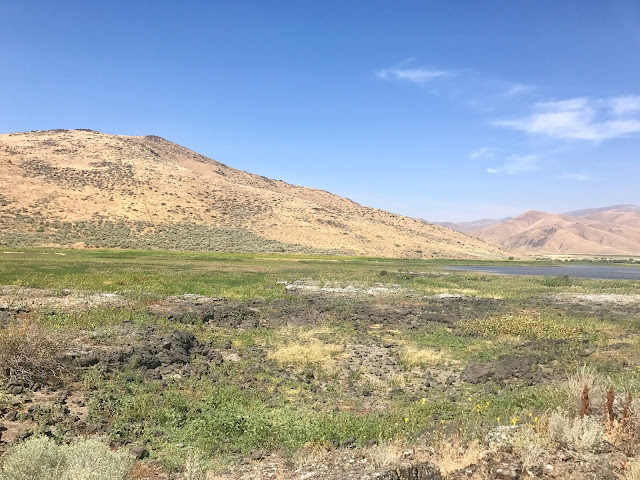Chris promised that a total solar eclipse would be unlike an 80% or even 99% eclipse and as usual, he was right.
We left early (too early) for Smith's Ferry, where Grace Church and the local community had set up reserved parking in a field, and rented portapotties and set up food trucks.As we waited, people played mah jong and vaped and did embroidery and set up tents. They flew drones.
Little kids wandered around. A lot of people brought their dogs.
We had stocked up on supplies at every convenience store for the past week. A cooler filled with chex mix and cheese and banana bread and beef jerky.
We settled into our comfy chairs, as the time keeper announced the start. Chris and Adam played with shadows.
It was a gorgeous day by the Payette River.As the eclipse approached 80%, a chill came over us and the park seemed muted, as seen through a filter.
Denise worked on photographing the eclipse.
At totality, we took off our glasses and gawked. Our announcer noted the maximum moment and played an eerie tone. A cheer went up. (From Chris' video)
I'd expected birds going wild, but it was blissfully quiet as darkness fell rapidly over us. And then less than three minutes later, sunlight returned, first with a bright burst of pearl in the upper rightWe'd been warned about traffic so we dawdled by the river for an hour, and then spent 3 hours going 12 miles in the all-American eclipse traffic jam.
We are already discussing where to go in 2024, and how to expand it into longer trip. It seems silly to travel so far for two and a half minutes.
But it was also inspiring, as a country in deep crisis, to come together in our love of science and astronomy.
Making pinhole cameras from cereal boxes, collectively looking to the moon and the stars: this is the America I believe in.
***
Postscript: Here's a video of totality shot through a telescope, with an excellent explanation of the corona:












































